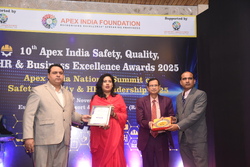India’s Just Transition Needs To Be Inclusive
This is especially critical in coal-producing states like Jharkhand, Odisha, and Chhattisgarh

As India accelerates its climate commitments, the country stands at a pivotal juncture in its journey towards a low-carbon economy. A successful transition away from fossil fuels must be just—inclusive, equitable, and supportive of workers and communities reliant on carbon-intensive sectors such as coal, steel, cement, and automotives.
This is especially critical in coal-producing states like Jharkhand, Odisha, and Chhattisgarh, where livelihoods and state economies are deeply tied to fossil fuel industries. The shift to clean energy must, therefore, go hand-in-hand with policies that promote socio-economic equity and regional resilience.
Financing the Social Side of Transition
While India has made strides in sustainable finance, funding for the social dimensions of transition—such as worker reskilling, community development, and regional economic diversification—remains limited. A new report by the Institute for Energy Economics and Financial Analysis (IEEFA), titled “Just Transition Financing Ecosystem: Stakeholder Consultation,” calls for the creation of a robust and inclusive financing framework to manage transition risks and unlock opportunities.
The report underscores the need for coordinated efforts across regulators, ministries, financial institutions, corporates, and civil society to align capital flows and implementation strategies with Just Transition (JT) goals.
A Phased and Multi-Stakeholder Approach – According to IEEFA, a phased approach will be essential:
- Short-term: Pilot projects and targeted incentives
- Medium-term: Regulatory scaling and policy adjustments
- Long-term: Structural reforms to integrate JT principles across financial and policy ecosystems
Institutions like the Securities and Exchange Board of India (SEBI) and the Reserve Bank of India (RBI) are pivotal in aligning financial regulations with sustainability goals. SEBI’s initiatives—such as the Business Responsibility and Sustainability Report (BRSR)—can be expanded to include JT-specific indicators, helping channel capital to companies with credible transition plans.
Financial tools like Priority Sector Lending (PSL), Green Deposits, and Sovereign Green Bonds can be modified to include eligibility and impact criteria that reflect JT priorities.
“Capital can be mobilised through public and private sources, guided by ministries via blended finance and incentives. Corporates and their supply chains are key to implementation, especially in high-emission sectors,” said Gaurav Upadhyay, Energy Finance Specialist at IEEFA and co-author of the report.
Embedding JT in India’s Policy and Fiscal Framework
Sangeeth Raja Selvaraju, Policy Fellow at the Grantham Research Institute (LSE) and report co-author, highlights the role of the Ministry of Finance (MoF). “The MoF can embed JT into India’s fiscal strategy by aligning green taxonomies, allocating resources, and establishing dedicated funds for affected regions and communities,” he said.
The Ministry of Environment, Forest and Climate Change (MoEFCC) can also play a pivotal role by aligning JT with climate policies. Initiatives like the Green Skill Development Programme and Green Credit Programme, along with international financing avenues such as the Green Climate Fund, can support workforce transition and community resilience.
Corporate and State-Level Challenges
While corporates are beginning to integrate JT into their business strategies, they face practical challenges—high transition costs, limited finance for MSMEs, and policy uncertainty. There is a growing demand for clearer regulatory guidance, investor engagement, and incentives for green innovation.
“The government must also enhance state-level engagement, particularly in coal-dependent regions, where technical capacity to design and implement JT-aligned programs is limited,” noted Labanya Prakash Jena, sustainable finance consultant at IEEFA and report co-author.
Way Forward
Ultimately, a successful Just Transition in India requires sustained coordination between central ministries, regulators, state governments, the private sector, and civil society. Investments in capacity building, financial innovation, and inclusive policymaking will be crucial.
As Gaurav Upadhyay emphasizes, “India’s energy transition must not only mitigate climate risk but also empower its people and regions for a more equitable and resilient future.”
The writer of this article is Dr. Seema Javed, an environmentalist & a communications professional in the field of climate and energy




